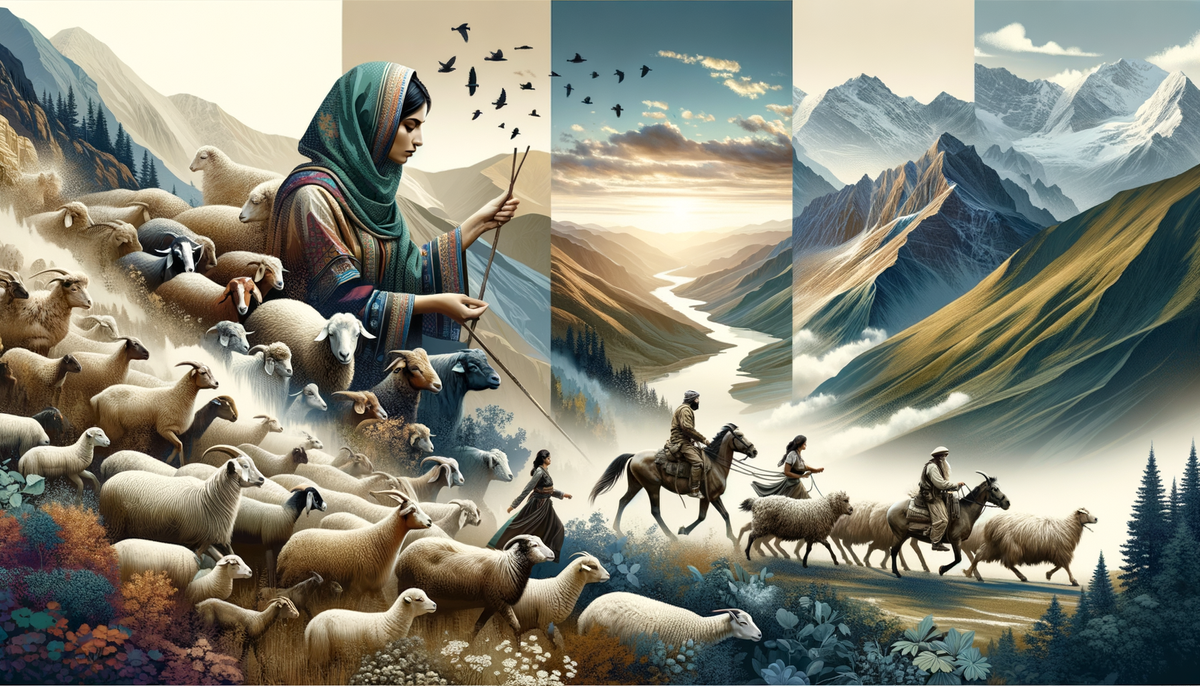Exploring the Life and Cultures of Modern Pastoralist Communities Around the Globe
Dive into the unique lifestyles and rich cultures of modern pastoralist communities around the world. From the Maasai of Kenya to the Sami in Scandinavia, discover how these resilient groups maintain their traditions in contemporary times.

Introduction
Have you ever wondered about the nomadic life and the cultures of pastoralist communities around the world? As an avid traveler, I've always been fascinated by these unique lifestyles, deeply rooted in tradition and simplicity. Interestingly, many of these communities have gracefully woven their rich histories into the fabric of modernity. My journey to understand these fascinating cultures took me to several offbeat places, each offering a unique glimpse into a way of life that seems almost otherworldly.
Discovering the Maasai of Kenya
In the great plains of Kenya, the Maasai people continue to live in harmony with nature, maintaining their traditional pastoralist lifestyle. A visit to a Maasai village feels like stepping back in time. The community's vibrant culture, expressed through their iconic red shukas and intricate beadwork, is still very much alive. They welcome visitors with open arms, offering an opportunity to learn about their traditions, from cattle herding practices to their unique social structures.
The Nomadic Life of Mongolian Herders
Mongolia's vast steppes are home to some of the most resilient pastoralist communities. Mongolian herders live in gers, or traditional felt tents, which are perfectly suited to their nomadic lifestyle. Witnessing their expert horsemanship and the way they raise livestock in one of the most challenging climates on earth is nothing short of inspiring. The Naadam Festival, celebrated annually, showcases their extraordinary skills in wrestling, horse racing, and archery, reflecting centuries-old traditions.
The Sami Reindeer Herders of Scandinavia
In the Arctic Circle, the Sami people of Scandinavia have thrived for millennia as reindeer herders. Their deep connection to the land and animals is palpable. I stayed in a remote Sami camp in Norway and experienced firsthand their way of life. The cold, crisp air and the vast, snowy landscapes create a serene backdrop for understanding the Sami's dedication to their herds. They share their stories and customs around a warm fire, making you feel an integral part of their centuries-old traditions.
Challenges and Transformations
Modern pastoralist communities face numerous challenges as they strive to preserve their traditions while adapting to a rapidly changing world. Issues such as climate change, land rights, and modernization pressures often threaten their way of life. Yet, these communities exhibit remarkable resilience. Many have found innovative ways to balance traditional practices with contemporary needs, such as engaging in eco-tourism, which offers a sustainable way to share their culture with the world while generating income.
Conclusion
Exploring the rich tapestry of pastoralist communities around the globe is a deeply enriching experience. It sheds light on their timeless wisdom and the delicate balance they maintain with nature. If you're intrigued by these unique cultures and want to delve deeper into the history and contemporary issues they face, you might find this resource on Pastoralists in the Modern World particularly insightful.
Every journey to these offbeat places has opened my eyes to the beauty of living in harmony with nature and the strength found in maintaining one's cultural heritage. If you ever get the chance, visiting these pastoralist communities is an adventure you shouldn't miss!



